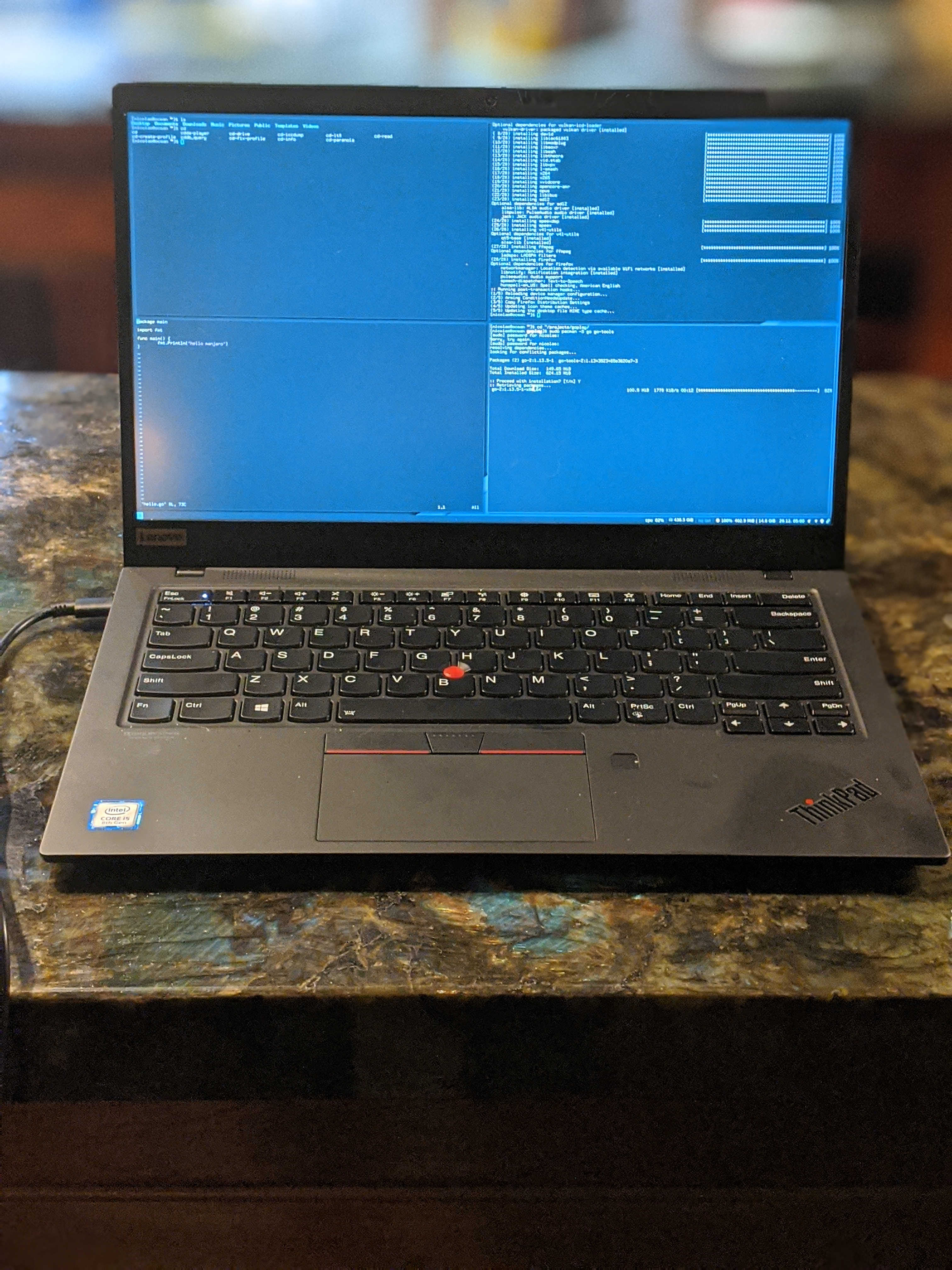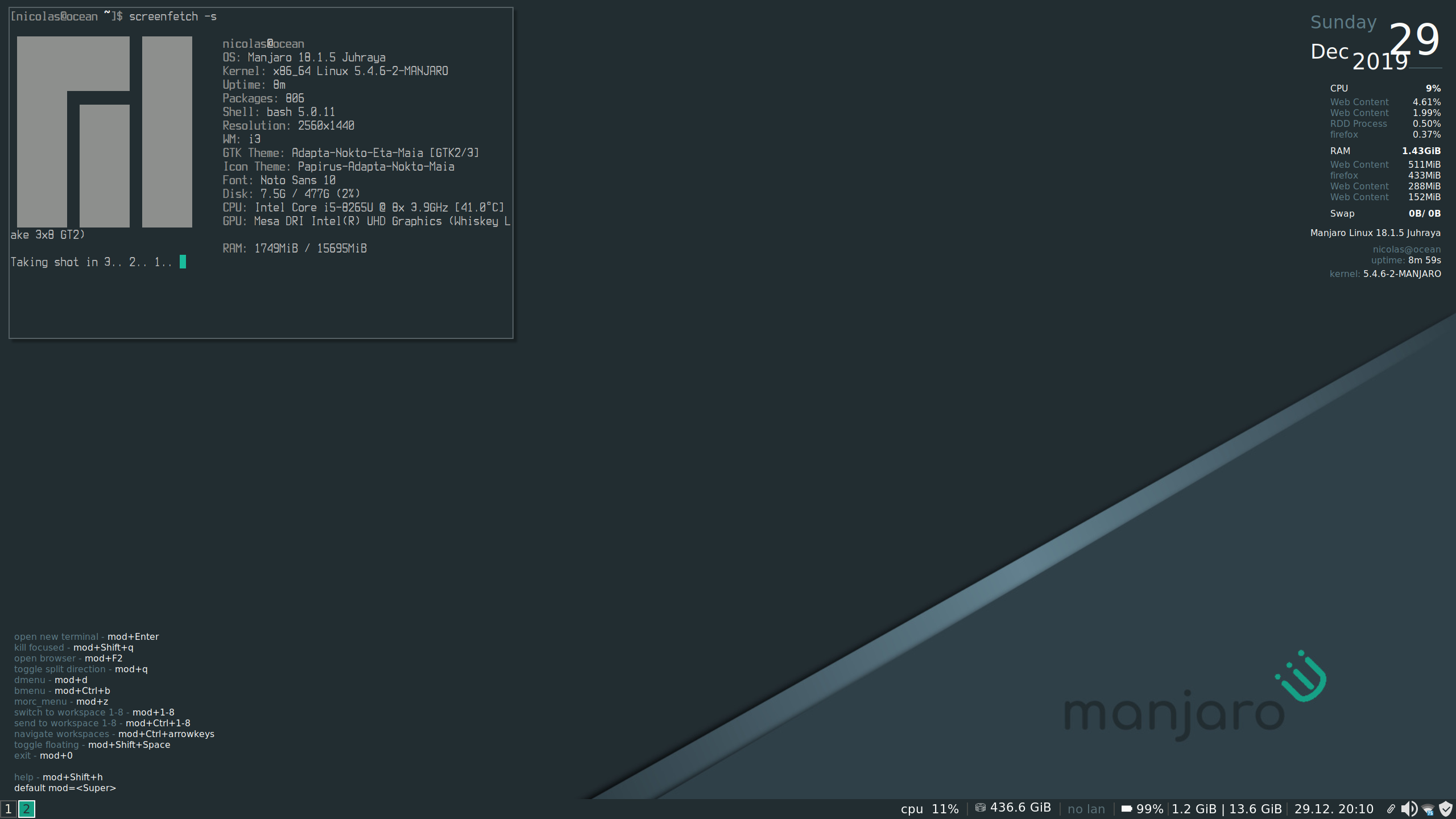Lenovo Carbon X1 Gen 7 + Manjaro Linux

I recently got a new laptop:
- Model: 20qd001uus
- Ram: 16 gb
- CPU: Intel Core i5-8265U
- Screen: 2560x1440
- Disk: 500gb SSD
I debated what to install on it for a while. I run Arch on my desktop PC, and in the past have ran Ubuntu on my laptops. I find pacman easier to use than apt, but I like the ease of installation and device support with Ubuntu.
For a laptop this is specifically important. I don't enjoy configuring media keys, or finding why closing the lid doesn't make the machine sleep. I also don't have the patience to configure system themes.
I chose Manjaro because it's based on Arch and claims to be user friendly. Here are some differences between Arch and Manjaro.
Installing
I downloaded the Manjaro Architect disc image. It took me a while to figure out how to get the flash drive to boot. Eventually I went into windows and did system recovery which finally gave me access to the bios.
The live media OS is impressive. It walks you through the installation process in a CLI. You don't need to type bash commands like you would in an Arch install (manual gparted commands are scary!). I chose minimal desktop installation with i3. Be careful as there are lots of menus to go through. I recommend having another computer available with an installation guide open.
Make sure to check mirror speeds before starting the package installation, I didn't do this my first try and it went really slow. So much that I started over again.
My second try everything worked except that it wouldn't boot due to a mistake with systemd-boot. Luckily I was able to fix it with the live media.
Tips on fixing an installation from the Manjaro Architect live environment:
After logging in do $ setup. This lets you easily configure an
internet connection. Exit the installer after configuring the
network.
Now mount the installed system. Use # manjaro-chroot -a instead of
# mount /dev/xxx /mnt && chroot /mnt /bin/bash. This will keep your
internet connection and devices working properly. Now you can install
or fix packages.
The Good
- Graphical login screen
- i3 gaps
- Lots of useful base packages installed
- Nicely configured i3 bar with useful widgets
- Update manager
- Network manager
- Clipboard manager
- Sound control
- Conky running on deskop
- Sane default dotfiles
- Cool PS1 prompt
- Nice i3 config that's well integrated with OS
- Comes with BMenu - a CLI system preferences interface, which works well.
- Cohesive system theme
- Comes with a screen locker
- Media keys work
- Camera works
The bad
- Everything is tiny from high DPI screen
- Sound doesn't work
- Videos don't play in full screen in firefox/chrome
- Emacs feels laggy (well, laggier than usual)
- Closing the lid freezes the system
- Mic doesn't work
Fixes
Unfortunately, it looks like I'll have to do some serious fidding to get the mic to work. I'm just going to think of this as a security feature. (EDIT: mic fix https://bbs.archlinux.org/viewtopic.php?id=249900)
I made a few changes in /.Xresources to fix scaling issues.
Scale the DPI up: Xft.dpi: 140
Make terminal font size bigger: URxvt.font:
xft:TerminessTTFNerdFontMono:pixelsize=23
Installing pulse audio $ install_pulse fixes audio, but adjusting it
via the applet on the i3 bar doesn't work. Fix for volume controls
worked for me.
Here's a screenshot after the above fixes with everything else default.

*Edit: * I distro hopped a few times after that, and ended up on Arch. Notes here.
